Creating a Cacao Agroforestry System by Lenardo Ash
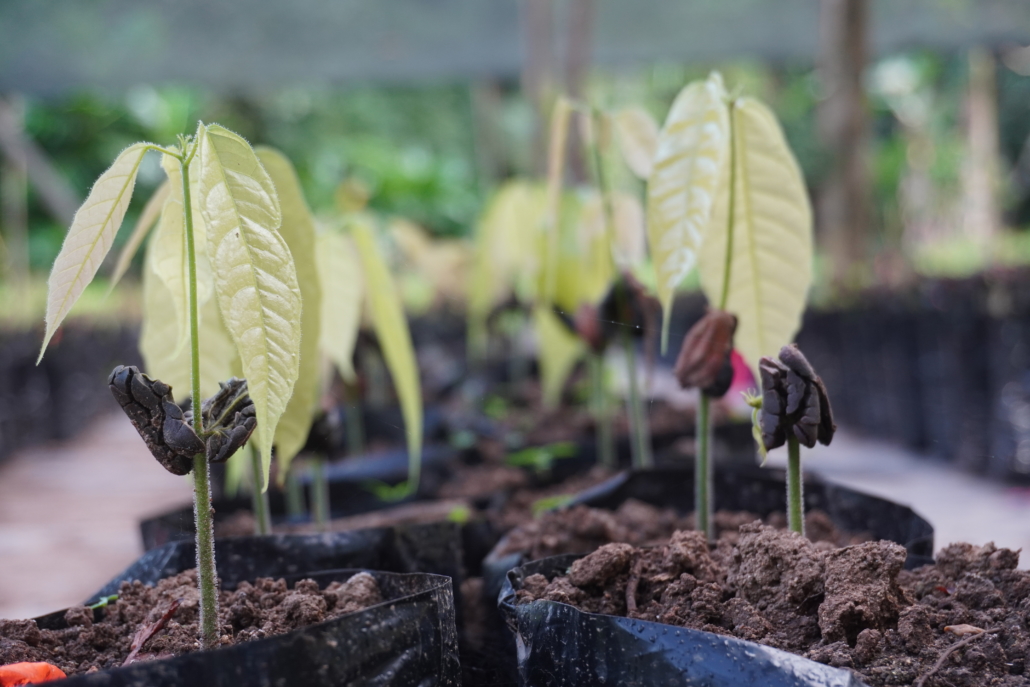
Who could possibly disagree with the restoration of degraded tropical forests while conserving the genetics of a rare cacao species? BFREE’s reforestation efforts involve the planting of Criollo cocoa trees, as well as temporary shade trees, fruit trees, and other permanent shade trees (emergents) in small naturally degraded areas of the forest.
As BFREE’s Cacao Fellow, I have spent significant energy working in and documenting the plant nursery. This year we plan to produce 5,000 Criollo cacao trees. Bags in the nursery have already been filled with soil, with one of our soil’s main components being compost. The compost at BFREE consists of vegetable peels, eggshells, food remnants from the kitchen, and other organic waste produced during pruning and weeding.
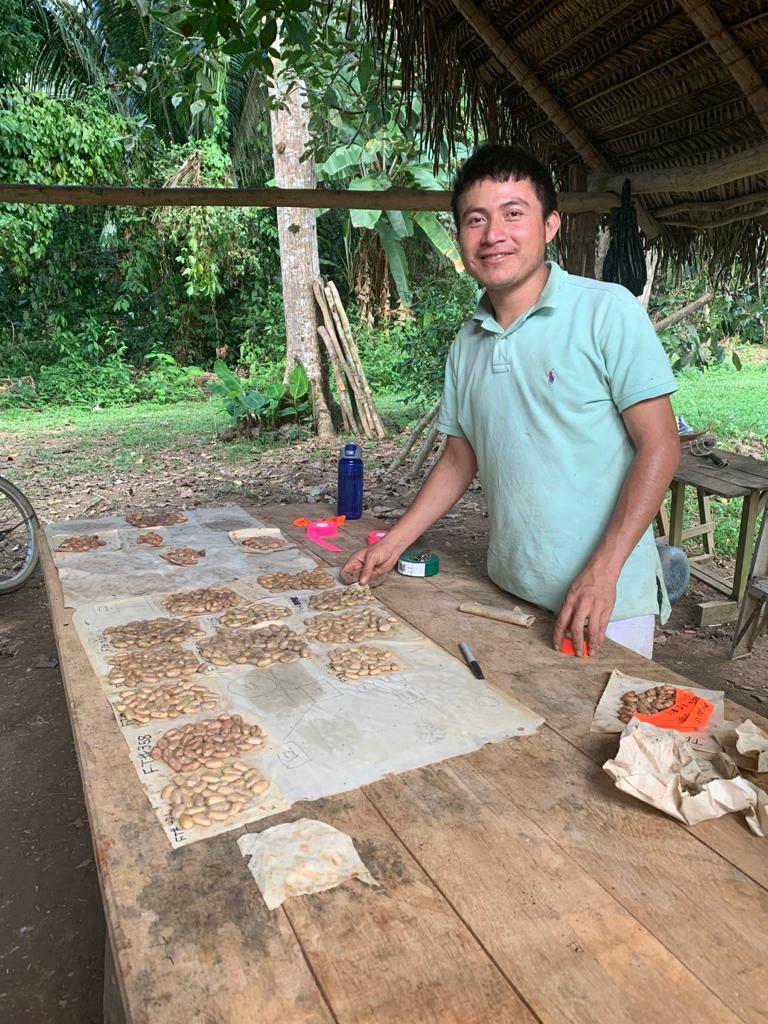
For me, one of the main highlights for this year will be continued experimentation with the grafting of Criollo cacao. I am working to graft Criollo budwood to rootstock of the four existing Criollo phenotypes found on the property. First, seeds for the rootstocks are collected from the existing agroforestry demonstration area made of Trinitario cacao, which was planted about 15 years ago. Once the Trinitario seeds are collected, they are germinated, planted in bags, and ready for grafting within 3 months. We will then move the new Sapling trees to the farm approximately 6 months later. Criollo tends to grow a little slower than typical cacao varieties, so we expect to graft them 3-5 months after germination. They should be ready for transplanting after an additional 7 months.
Tree Species in the Agroforestry Plots
Some of the hardwood tree species that we are using in the agroforestry farm are: Barba Jolote (Cojoba Arborea), Mahogany (Swietenia mahagoni), and Jobillo (Astronium graveolens). The leaves of these trees are spaced so as to let ample light penetrate to the leaves of the grafted cacao in the understory. Certain plants have also been selected because they help with soil fertility (soil carbon, fixing nitrogen, phosphorus content, and soil aggregation) these include Madre de cacao (Gliricidia sepium), Bri-bri (Inga edulis), Tiger bush (erythirina latissima ), Pigeon Pea, (Cajanus cajan, Bananas (Musa acuminata), Plantain (Musa paradisiaca), and Coconut (Cocos nucifera). All of these tree species are dispersed around 5,354 grafted plants, most of which are the Purple to Orange phenotype. The BFREE phenotypes were named by Elmer Tzalam and refer to the color of the pods at two stages while young and growing. Therefore, the “Purple to Orange” Phenotype is purple when it is young and orange when it is ripe. The total area being managed at the moment is around 3.74Ha.
Biodiversity in the Agroforestry Plots
The cacao agroforestry is showing signs of increased biodiversity presence. I have spoken to BFREE’s Head Ranger, Mr. Sipiriano Canti, and he has been setting some camera traps in the agroforestry area. He mentioned that the cameras have captured images of all five wild cats in Belize (Jaguar, Puma, Margay, Jaguarundi, Ocelot), Baird’s Tapir, agouti, Tyra, and Kinkajou, among other species. During the day, there are many species of birds that feed on insects and nectar on the farm. Some nests have also been observed in the madre de cacao trees. I believe that we will see more positive outcomes from this initiative, and I am very excited to be a part of this extraordinary project.
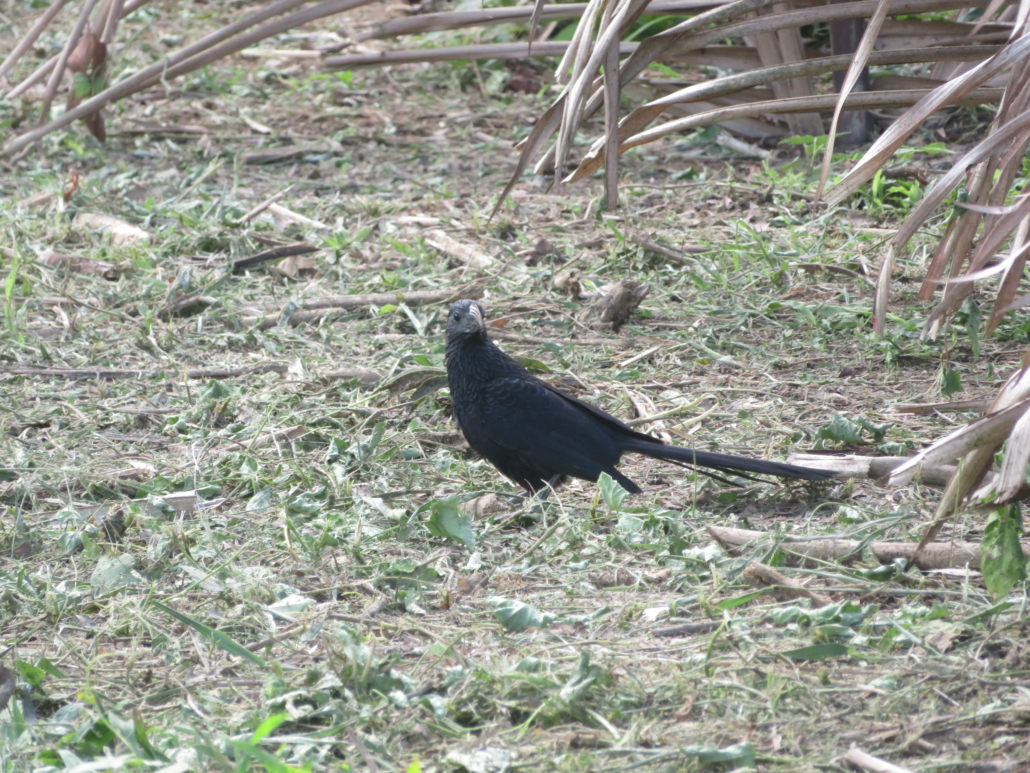
Groove billed ani feeding on insects in the cacao farm. 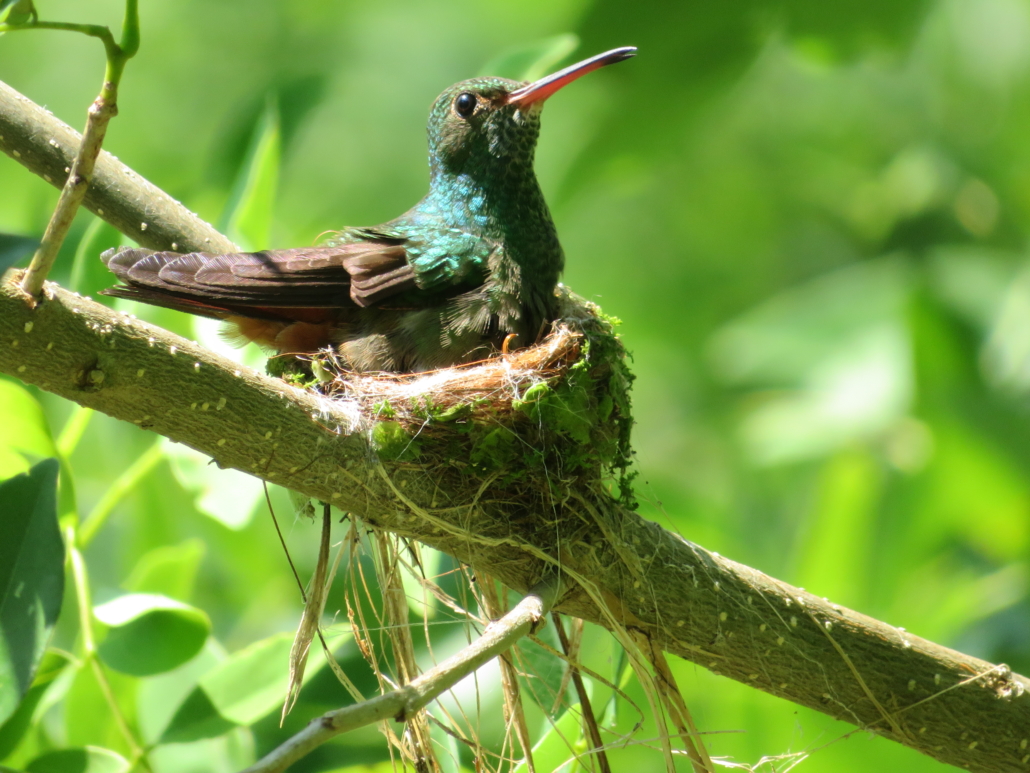
Rufous tailed hummingbird and their nest in a madre de cacao tree. 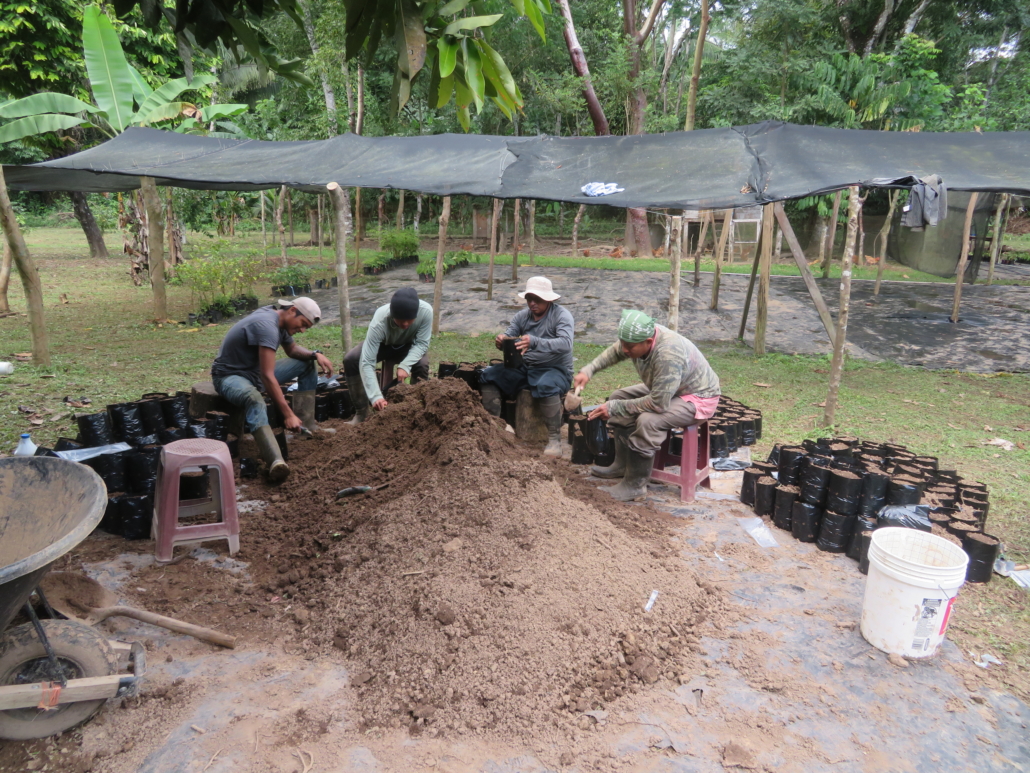
Staff fill bags at the cacao nursery. 
Selection of germinated cacao seeds.



Great post Leo! I enjoyed reading more about the cacao and also to know the names of the various shade trees you have been using. I am excited to be working on this project too and it was a treat to work with you in the field.
Thanks for Sharing the blog.
thanks for sharing the blog. its really helpful.